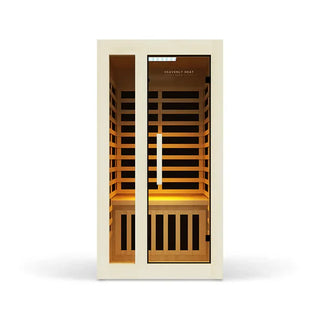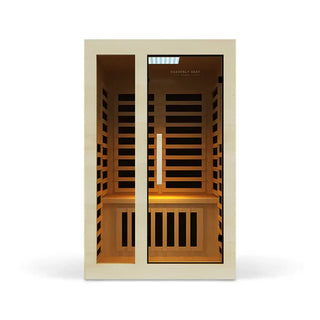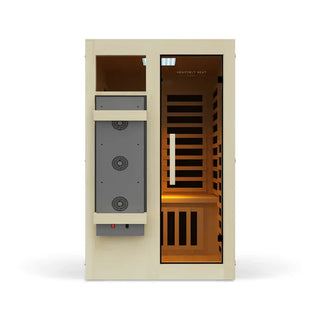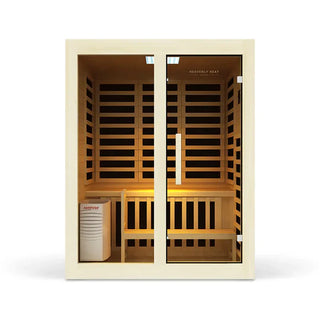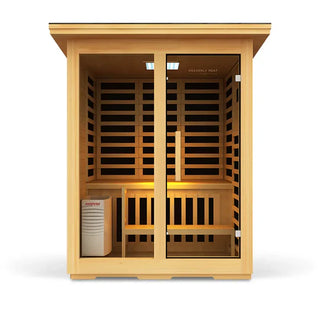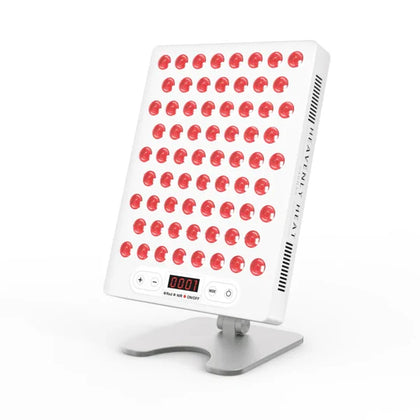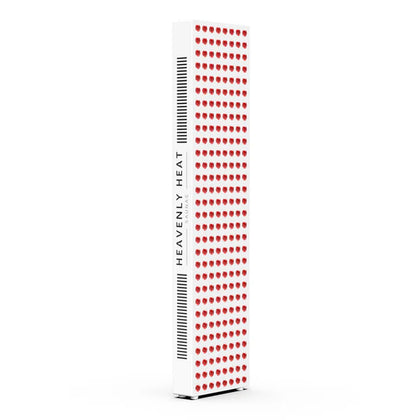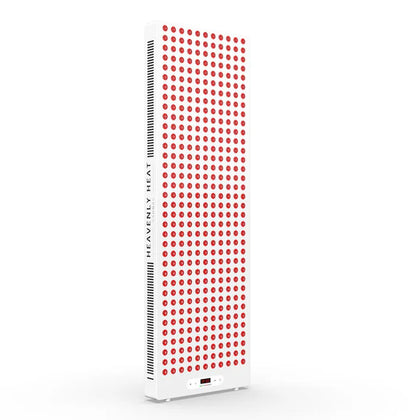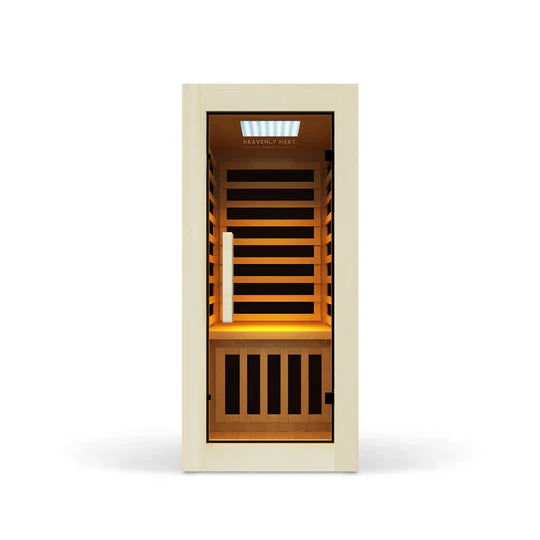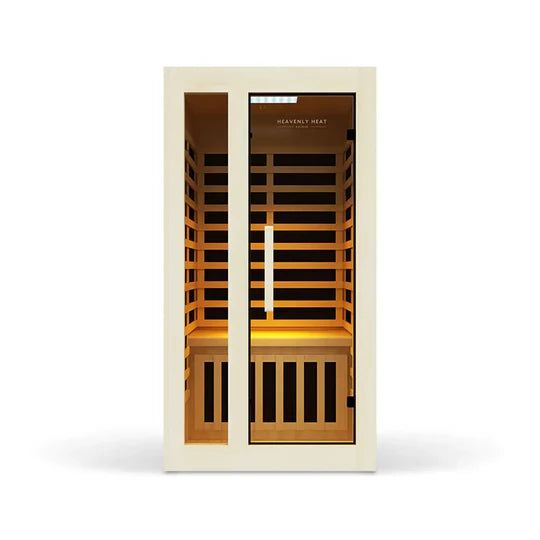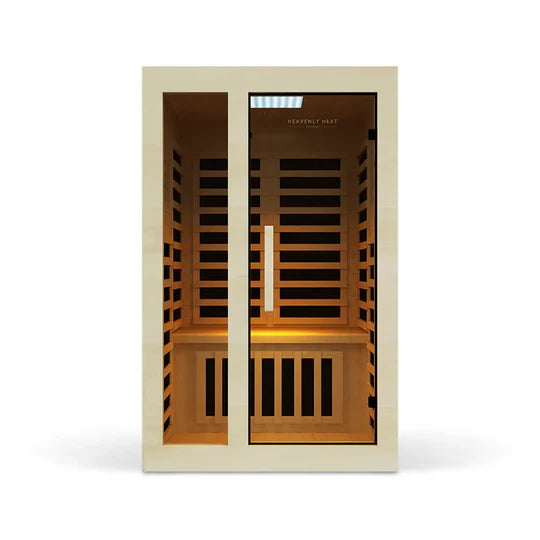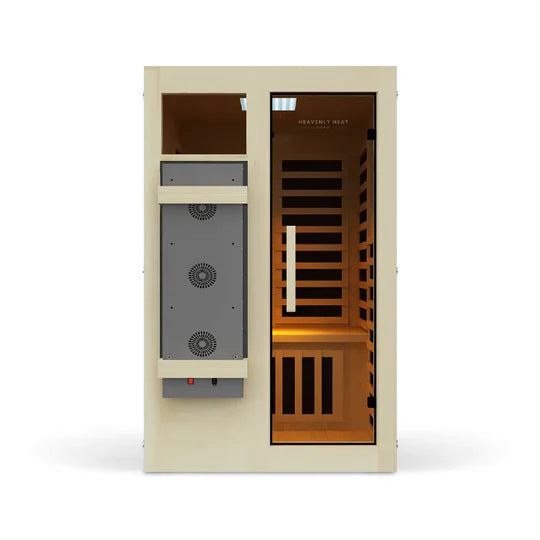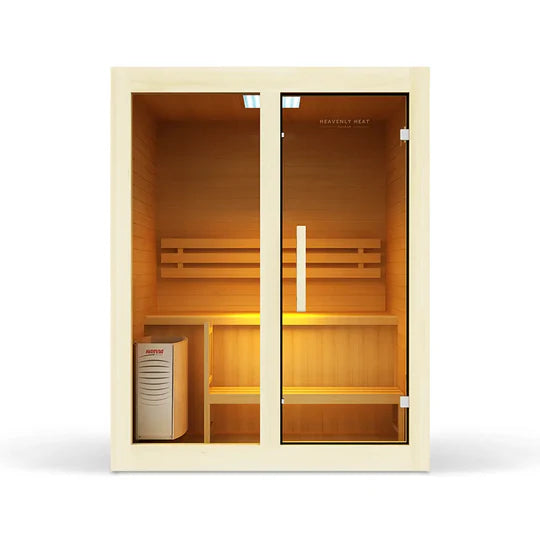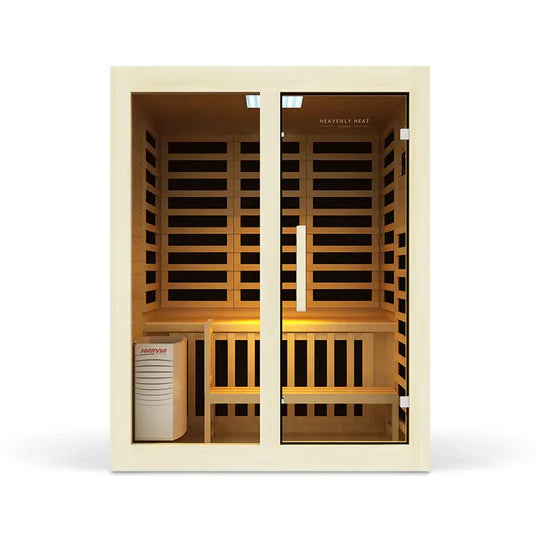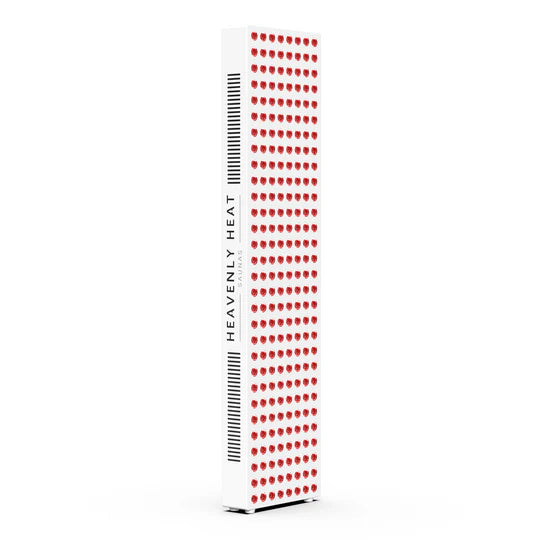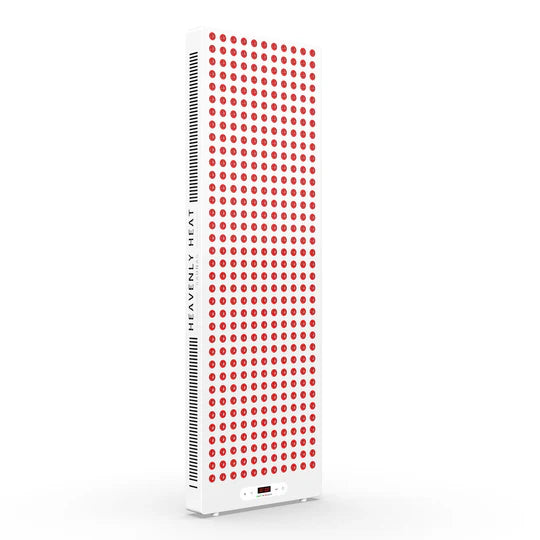Sauna and Cold Plunge Routine for Beginners: Tips for Getting Started
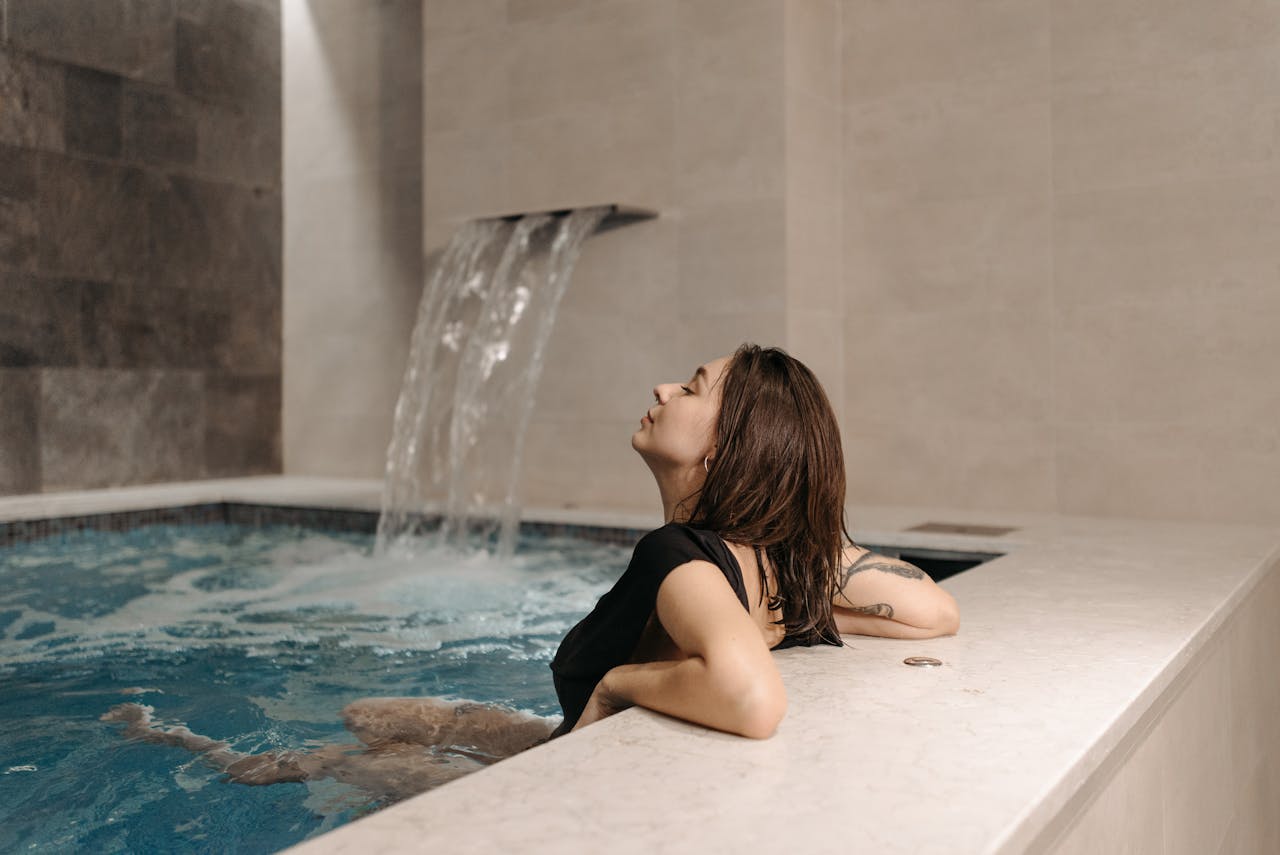
Sauna and cold plunge routines offer incredible benefits, from improved circulation to a boosted immune system.
However, as a beginner, you might wonder: What’s the best way to start without overdoing it?
Struggling with uncertainty can be frustrating. Don’t worry, this guide simplifies the process and provides tips to help you build a routine that’s both effective and enjoyable.
Key Takeaways
- Stay hydrated with water or electrolyte drinks before and after your routine to avoid fluid imbalance.
- Showering before a sauna enhances effectiveness by keeping pores open and clear.
- Start with the sauna to relax muscles and prepare your body for the cold plunge.
- Limit cold plunge sessions to 30 seconds to 1 minute as a beginner to avoid overexertion.
- Repeat the cycle 2-3 times for maximum benefits, and take time to relax afterward for optimal recovery.

Best sauna cold plunge routine
Stay Hydrated
- Hydration is Non-Negotiable: Staying hydrated is key during your sauna and cold plunge routine. The heat makes you sweat, while the cold can trick your body into thinking it doesn’t need water, creating a perfect storm for dehydration.
- Choose Electrolytes Over Plain Water: To truly stay balanced, water alone might not cut it. Drinks rich in electrolytes, like coconut water, sports drinks, or a simple mix of water, salt, and citrus, help your body retain fluids more effectively.
- Drink Before and After Sessions: Timing matters: aim for 16–20 ounces of fluids both before and after your sauna/cold plunge combo to keep your hydration on point.
- Skip Booze and Caffeine Beforehand: Alcohol and caffeine can dehydrate you and reduce the effectiveness of your recovery. For best results, avoid them 2–3 hours before your session.
Shower First
- Clean skin starts with a shower: Showering before the sauna clears away sweat , dirt, and oils that can block your pores. Clean skin allows for better sweating and detoxification during your session.
- Warm water gets your pores sauna-ready: Using warm water in your pre-sauna shower opens up your pores, helping your body ease into the heat and start sweating more efficiently once you're inside.
Gather the Clothing and Accessories You Need
- Sauna Comfort Starts with the Right Wear: For the sauna, lightweight and breathable options like swimwear, towels, or sauna wraps help you stay cool and comfortable. Cotton towels are perfect for the sauna’s heat, offering softness and absorbency.
- Cold Plunge Requires Quick-Dry Gear: A swimsuit or fast-drying outfit is ideal for the cold plunge, giving you full mobility while staying functional in water.
- Stay Warm After the Plunge: After exiting the cold plunge, cozy up with warm clothing such as a thick jacket or a soft blanket to help your body warm up quickly and safely.
- Flip-Flops Keep It Clean: Slip-on footwear like flip-flops helps you stay hygienic and comfortable while transitioning between sauna and plunge.
- Hydration is Part of Your Outfit: Bring a water bottle along staying hydrated is just as important as what you wear.
- Timers Add a Relaxing Touch: A waterproof watch or sand sauna timer keeps you aware of your session duration without ruining the chill vibe with alarms or screens.
- Keep Setup Close and Convenient: Make sure your sauna and cold plunge setup is within short walking distance to retain the hot-cold contrast and prevent body heat loss.
Start with the Sauna First
Starting with the sauna is key in your hot and cold therapy routine. The heat helps relax your muscles and open up your pores, making your body more receptive to the cold plunge.
Stay in the sauna for about 10 to 15 minutes, long enough to feel the warmth but not too long to overheat.

Do Cold Plunge
- Start Cold with 30 Seconds to 3 Minutes: If you’re a beginner, stay in the cold plunge for 30 seconds to 1 minute. Experienced users can extend this to 2–3 minutes. If you don’t have access to a plunge pool, you can use a cold shower (2–3 minutes) or an ice bath in a standard tub as an alternative.
- Cold Plunge Works Best at 50–60°F: The recommended water temperature for a cold plunge is between 50–60°F (10–15°C), which helps reduce muscle soreness and improve circulation.
- Sauna to Cold Plunge = Energizing Shock: The cold plunge after a sauna boosts circulation, energizes you, and helps muscle recovery, but the shock can feel intense. The sudden shift from sauna to cold plunge triggers a rapid heart rate increase, flooding your system with adrenaline for an energizing effect.
- Breathe Deep to Beat the Shock: To ease into the plunge and manage that initial shock, take slow, deep breaths, in through your nose and out through your mouth. This helps calm your mind, steady your breath, and relax your body as you adjust to the cold.
- Listen to Your Body and Know Your Limits: Start slowly, and always listen to your body. If you feel lightheaded or unwell, get out of the water.
- Check Your Health Before Plunging: Before jumping into an ice bath, make sure it’s safe for you. Dr. Sanam Hafeez, a neuropsychologist, advises against ice baths if you have heart or breathing issues or if you’re pregnant.
- Skip the Plunge Right After Lifting: Jamie Seeman , a board-certified obstetrician-gynecologist, recommends using the sauna after a workout to help with recovery but advises against a cold plunge immediately after resistance training. Cold plunges right after lifting can reduce muscle protein synthesis and hinder your recovery.
- Keep Head Above Water & Warm Up Slowly After Cold Plunge: When using the cold plunge, always keep your head above the water to stay safe. Afterward, take your time to warm up your body slowly. This helps your circulation return to normal and keeps you comfortable.
Repeat
- Start the cycle and repeat for full effect: For a great sauna and cold plunge routine, repeat the cycle 2–3 times for maximum benefits. If you're feeling good, you can go beyond three rounds, but always listen to your body.
- Time matters—keep it short and effective: Stick to 12–15 minutes in the sauna and under 5 minutes in the cold plunge. Longer isn't always better, consistency and balance are key.
- Recovery is part of the ritual: After each plunge, take time to rest and recover. This is where your body reaps the rewards of the hot and cold exposure.
- Stay warm and avoid sudden heat: Dr. Tracy L. Zaslow advises: “Take off wet clothes, wear warm layers, or drink something warm.” Avoid jumping back into heat right after a cold plunge to prevent dizziness or fainting.
Relax
- Rest to Recharge Your Body: Relaxing after a sauna and cold plunge routine is essential for recovery. Take 10–15 minutes to rest and let your body temperature return to normal. This pause helps ease muscle tension and improves circulation naturally.
- Hydrate Like a Boss: While you're resting, drink plenty of water to help your body recover and stay energized. Proper hydration supports every part of your recovery and helps you feel refreshed.
- Stretch and Breathe to Deepen the Calm: Use this quiet time for deep breathing or gentle stretching. These small movements enhance the benefits of contrast therapy, improve blood flow, and calm the nervous system, leaving you relaxed and rejuvenated.
Question |
Sauna |
Cold Plunge |
| Do you need to hydrate before use? | Yes |
Yes |
| Should you shower before using? | Yes |
No |
| Is it safe to stay in the sauna for over 20 minutes? | No |
N/A |
| Can you use cold plunge immediately after weightlifting? | No |
Yes |
| Is it important to dry off completely after sauna? | Yes |
No |
| Should your cold plunge water be between 50-60°F? | N/A |
Yes |
| Can you stay in the sauna for 10–15 minutes safely? | Yes |
N/A |

Benefits of contrast therapy sauna and cold plunge
Boost Your Circulation for Better Health
- Enhances Blood Circulation Naturally: Alternating between sauna heat and cold plunge significantly boosts circulation. The sauna opens pores, helping to release impurities, while the cold plunge tightens pores, promoting stronger blood flow and smoother skin.
- Ideal Temperatures for Circulatory Boost: The recommended temperature for the sauna is 140–200°F, while the cold plunge should be around 37°F. Knowing these optimal ranges helps maximize the circulatory benefits of contrast therapy.
- Backed by Science for Circulation and Healing: A 2020 study found that infrared therapy and cold treatments significantly improved blood flow, enhanced muscle tone, and reduced stiffness and pain, confirming the circulatory and healing benefits of this practice.
Accelerate Muscle Recovery and Reduce Soreness
- Cold + Heat = Faster Recovery: Cold plunge therapy, combined with sauna sessions, can significantly accelerate muscle recovery and reduce soreness. This powerful combo helps the body bounce back faster after intense workouts.
- Pro Athletes Trust the Cold Plunge: Professional athletes, like LeBron James, rely on cold plunges to stay game-ready. On game days, LeBron starts at 6:30 am with a cold plunge to boost circulation and reduce muscle stiffness, proving its value for elite performance.
- Contrast Therapy Boosts Muscle Performance: A 2024 study found that contrast therapy, alternating between cold and heat, improves muscle elasticity and reduces tension. This method enhances how muscles respond to recovery, especially after high-demand activity.
- Cold Therapy Improves Tone and Flexibility: The study also showed that cold therapy improves muscle tone and flexibility, making it a go-to post-workout strategy for athletes aiming to maintain peak physical condition.
Strengthen Your Immune System
- Cold Water Makes Your Immune System Stronger: Cold plunges help your body make more immune cells and fight off sickness better over time.
- Sauna Supports Your Body’s Natural Defenses: Regular sauna use helps create more infection-fighting white blood cells and keeps your cells healthy.
- Hot and Cold Together Help Clean Your Body: Switching between sauna and cold plunge helps remove waste and reduce swelling, which supports your immune system .
Achieve Deeper, More Restful Sleep
- Cold Plunge Signals Your Body to Wind Down for Sleep: Cold water immersion lowers your core body temperature, signaling to your body that it’s time to relax and prepare for sleep. This cooling effect helps activate your natural sleep responses, making it easier to fall asleep.
- Cold Water Calms Your Body for Restful Sleep: When you immerse yourself in cold water, your body reduces inflammation , lowers heart rate, and directs blood to your core. This calming response prepares your body for deeper, more relaxed sleep.
- Cold Plunges Enhance Sleep After Intense Workouts: A study on male runners found that cold plunges after exercise improved sleep quality by increasing slow-wave sleep and reducing nighttime disturbances. Cold immersion supports better recovery and sleep for athletes.
- Cold Plunge Reduces Stress, Boosts Sleep Quality: Cold plunges lower cortisol levels (the stress hormone) and increase dopamine, a feel-good chemical. This hormonal balance promotes relaxation, reducing stress and supporting better sleep.
- Timing Cold Plunges and Saunas Improves Sleep Cycles: Using a cold plunge 1–2 hours before bed, combined with a sauna session in the early evening, helps regulate your internal rhythms. This combination cools and relaxes your body, optimizing sleep quality.
- Sauna Heat Helps Relax Muscles and Induces Sleep: Heat from saunas relaxes muscles and triggers a calming effect, preparing your body for a peaceful transition into sleep. Saunas reduce muscle tension and set the stage for a deep, restorative night’s rest.
- Sauna Use Lowers Stress Hormones for Better Sleep: A study on middle-aged men showed that regular sauna use significantly reduced cortisol levels, improving overall sleep quality and promoting recovery, especially after intense activity.
- Cold Plunge in the Morning, Sauna at Night for Perfect Sleep Balance: Cold plunges in the morning help wake you up and boost alertness, while saunas in the evening promote relaxation and help you wind down. This balance supports a natural sleep cycle aligned with your circadian rhythm.
Boost Your Metabolism
- Sauna Makes Your Body Work Harder: Sitting in a sauna heats up your body, and to cool down, your system starts working harder. This pushes up your heart rate and metabolism. Studies show it can boost your metabolism by 25–33% , helping you burn more calories and even lose a bit of weight .
- Cold Plunge Burns Fat to Warm You Up: Jumping into cold water shocks your system, in a good way. Your body starts burning fat to keep you warm, which speeds up your metabolism. It also turns bad fat into good fat that burns more energy.
- Hot and Cold Together Work Even Better: Switching between sauna and cold plunge keeps your body guessing. That back-and-forth makes it work harder, which helps you burn even more calories and keeps your metabolism active.
- Do It Often to See Real Changes: Doing this once in a while isn’t enough. To really boost your metabolism, you need to do it regularly, at least a few times a week. The more consistent you are, the better the results.
Combining cold plunges, saunas, and exercise can boost health when done correctly. Dr. Zaslow describes a cold plunge as “a one-man hot tub, but it’s freezing,” and emphasizes that exercise is the main driver of benefits. This trio can aid recovery, improve circulation, and increase energy. However, people with heart or circulation issues should consult a doctor first. Don’t overdo it, too much can cause harm. Start gradually and focus on balance for the best results.
FAQs
How can you mentally prepare for the cold plunge?
To prepare for a cold plunge, focus on calming your mind and controlling your breath. Slow, deep breaths can help you stay relaxed. Start with small exposures to cold water to gradually reduce fear. Overcoming the cold comes down to mindset. View it as a challenge and embrace it as an opportunity for growth.
What is the best time of day for sauna and cold plunge?
The best time for sauna and cold plunge sessions varies, but early mornings or after work are common choices. Morning sessions help boost energy and circulation, while evening sessions aid relaxation. If you're working out, try using the sauna and cold plunge after your workout for recovery. Ultimately, consistency is key, so choose a time that fits your routine and stick with it.
How do you stay consistent with sauna and cold plunge therapy?
To stay consistent, pick a regular time each day for your sauna and cold plunge sessions. Make it part of your daily routine, like before or after a workout. It can be tough to stay motivated, but start small and gradually spend more time in the sauna or cold plunge. As you feel better and see the benefits, it will get easier to keep going.
How should I breathe during the cold plunge to stay calm and safe?
When you enter a cold plunge, focus on your breath to stay calm. Take deep, slow belly breaths in through your nose, out through your mouth. Don’t hold your breath; this can spike your heart rate. Instead, try a steady rhythm like a four-second inhale and six-second exhale. Controlled breathing helps your body adjust and keeps your nervous system steady.

